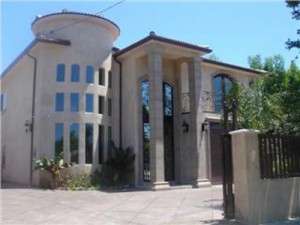Just as many consumers ponder what McDonalds burgers are really made of, real estate professionals and journalists ask an equally probing question: What is a “McMansion”?
According to research completed by Brian Miller, a sociologist at Wheaton College who has been studying housing and suburban development, the term McMansion was coined in the ’80s, and though it really took hold in the late ’90s, it still has an extremely vaugue definition, as is used by many people to describe a wide variety of home qualities.
“There’s not a single process of McMansions going on,” says Miller. “Sure, there are big houses across the United States, but not everyone’s seeing them the same way or talking about them the same way.”
Miller’s research included a study of how many times the word McMansion was used in the New York Times and how many in times in the Dallas Morning News from the beginning of 2000 to the end of 2009. He found the term was used in 637 New York Times articles and 173 Dallas Morning News articles, with 2005 being the year the term was used the most often (an unsurprising finding, given 2005 was the height of the housing boom; also unsurprising – in the late 90’s, before the boom took off, the term was only used 27 times between both papers).
Miller also took a look at each use of “McMansion” and tried to decipher what each author meant when they said it. Miller says that most uses fell into about four categories of meaning: a large house; a relatively large house; a home with bad architecture or design; or, a symbol for other issues, especially sprawl and consumerism. Most often, though, “McMansion” simply referred to a large house.
“But what constitutes a large house isn’t clear either,” says Miller. “You have people who would suggest that 3,000-square-foot homes are McMansions. Well, it’s 500 square feet more than the average new home, but that’s a lot different from other people who are describing 10,000-square-foot homes as McMansions.”
Thus, Miller says “McMansion” is normally used as a negative term when describing homes, and comments on his story featured many expressing that very opinion.
“A mansion is well-designed, tastefully executed with quality materials, and aesthetically sited in proportion to its grounds, neighborhood and environment. A McMansion is not,” wrote one commenter.
“McMansions in my opinion are the cookie cutter developments of architectural mashups of various stylistic trends to make a cheaply built large house largely identical to those around it,” another wrote. “McDonald’s mass produces food that is identical everywhere, acceptable quality for most, but a nightmare for the exerperienced palatte (sic), or those who have tasted high quality food. Similarly, McMansions are built to be acceptable for most, but are really bad architecture, junky materials that are made to look like the more expensive real thing, and are copied from lot to lot to lot. McMansion is actually a perfect descriptor of these homes.”
And our favorite comment of the bunch: “Garrison Keilor once said that modern suburban houses look like they were built for giraffes with cars, and the animals were kind enough to let humans live upstairs … “Ostentation and false design are features of McMansions where I live. Fake rock facing, “Tuscan,” fake French with Mansard roofs, two and three story entry ways often with overly grand staircases (a la Gone with the Wind or the Beverly Hillbillies), fake stucco peeling off fake brink underneath, fake post and beam/Elizabethan, elaborate window shapes mixed in a hodge-podge manner, etc.”
Miller also found a cultural element to the term. Though “McMansion” was used negatively in the New York press, it was shown in a more positive light in Dallas.
“In Dallas, you had a lot more readers quoted using this term, both negatively and actually some in positive terms,” says Miller. “There was actually a decent sized group of people in Dallas who did not use this totally as a negative term. Whereas New York City, it was pretty much completely negative.”

I was under the impression that a McMansion was a house that was larger than a typical house, but not large enough to be considered an actual mansion. Like around 3 to 5 thousand square feet. Didn’t know there was more than one definition.
It seems to be mostly fueled by bitterness and jealousy… If you live in a cramped city and a tiny apartment, you are more likely to call someone else’s home a “mcmansion,” with a hint of disgust.